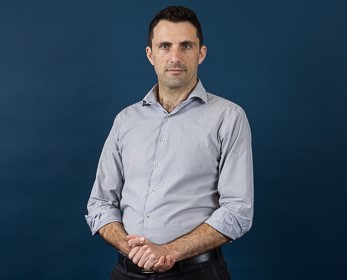At first glance, a four-day working week seems like a massive win for workers.
An extra day off? Without a pay cut? That has to be a good thing… right?
In fact, the reality is much different.
Advocates of a four-day week push for a '100-80-100' model, where workers KPIs and pay stay the same, but they only work 80 per cent of their previous hours.
It's been touted as revolutionising the world of work and a win-win for workers and employers.
A company advocating this model and running trials — 4 Day Week Global — was recently named on the annual TIME100 Most Influential Companies list.
But dig deeper, and the four-day week is revealed to be an HR fad, shaped by its nature as an employer-led movement.
Companies are introducing it to increase productivity and aid recruitment; many are using it to reduce conditions.
It's also not what it says on the tin: even in many trials, workers don't actually gain a full day off work per week.
For example, some Australian employers who have adopted the four-day week counted public holidays as the one day off for the week.
The United Kingdom's four-day week pilot saw 33 organisations trial offer it across a six-month period, which saw some employers reduced workers' annual leave entitlements proportionately to the new four-day week and absorbed public holidays into the four-day week.
In both the UK and Australian examples, workers in some companies could still be called into work on their "day off".
In these organisations, the exchange is unequal, as the employer not only retains the same output from workers, but in addition takes away existing leave entitlements.
In four-day week trials, the work week is shortened — but by far fewer than 8 hours.
Iceland's trial, for instance, cut only four hours from the work week, while 9 per cent of workers in a six-month 2022 Four Day Week Global (4DWG) international trial actually ended up working more!
The four-day week is also unlikely to be achievable on scale.
The colour of the collar
Trials to date have been predominantly based in small to medium, white-collar organisations.
Findings from these trials haven't suggested risks arising as a result of the arrangement, and report positive outcomes such as improved self-reported psychological and physical health.
But blue-collar workers will be a different story. A tradesperson using power tools or a support worker caring for the elderly is unlikely to be able to squeeze their regular workload into less time, at least without rushing and risking injury to themselves or others.
Even for white collar workers, it is hard to see this model being successful when for many, workload is already a huge issue and work has already been sped up.
Workers with disabilities and casual workers are already falling off the four-day week bandwagon.
Although flexible work arrangements in general can be hugely beneficial for disabled workers, little is known about the suitability of the four-day week for this group – particularly when introduced as a blanket measure for all employees.
What means are there for offering casual workers shorter work-weeks for the same pay? Or is this yet another "entitlement" they miss out on due to their contingent status?
In essence, the four-day week is work intensification with a more appealing name.
Under the 100-80-100 model, it’s hard to imagine how productivity is maintained – or even in some cases, apparently increased – without there being pressure to work more intensely, or faster - something linked to increased injury at work.
History isn't repeating
History tells us real change at work comes about through sustained, worker-led campaigns of industrial action.
Workers in Sydney fought for a shorter working day as early as 1840. Sydney stonemasons’ strike action in 1855 brought about the first eight-hour day.
They were followed in 1856 by their Melbourne counterparts, as well as other trades such as carpenters and plumbers.
This is widely considered to be a world first.
The point of these campaigns was to gain more time for rest, leisure and education, not fitting more work into a shorter time.
They were fiercely resisted by employers.
A similar pattern emerges in the 20th century. For example, Broken Hill miners – one of the best organised, politically radical and militant sections of the Australian working-class – won a 44-hour week through an eight month industrial campaign during World War One.
Led by the revolutionary socialist MP Percy Brookfield, the miners struck again from May 1919 to September 1920, winning, incredibly, a 35-hour week, a workers' compensation scheme and a wage rise.
It's the same on pay. As strike days and union density – the proportion of the workforce who are union members – has declined in Australia, so too has the proportion of GDP going to workers.
Union density and strike action has declined dramatically in many OECD countries in the last four decades. In Australia today, only 1 in 8 workers are union members, compared to 1 in 2 in 1982.
Labour's fortunes have certainly declined, notwithstanding something of a minor revival in strikes in the US – witness: Starbucks and Amazon workers unionising, and the 17 university strikes in the last year – as well as industrial action across industries in the UK and France.
This decline contextualises the current problems around long hours, pay, job insecurity, and workplace mental health.
The four-day week potentially opens up a useful discussion around these issues. But the contrast between previous worker-led campaigns to reduce working hours, and this employer-led movement, is stark: only one unambiguously improved workers' conditions and could be applied to all workers.
The four-day working week may work for some, but it's certainly not the worker-utopia it is increasingly touted as being.
This article was originally published in the Sydney Morning Herald.
Dr Alexis Vassiley is a lecturer at Edith Cowan University’s School of Business and Law. Dr Zoë Port is a lecturer in management at Massey University.

 The four-day week isn't the worker utopia some tout it as.
The four-day week isn't the worker utopia some tout it as.



